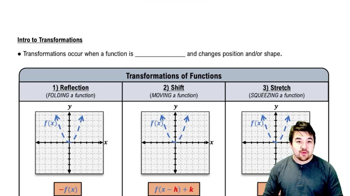The graph of ƒ is shown in the figure. Graph the following functions. <IMAGE>
a.
 Verified step by step guidance
Verified step by step guidance Verified video answer for a similar problem:
Verified video answer for a similar problem:



 5:25m
5:25mMaster Intro to Transformations with a bite sized video explanation from Patrick
Start learning